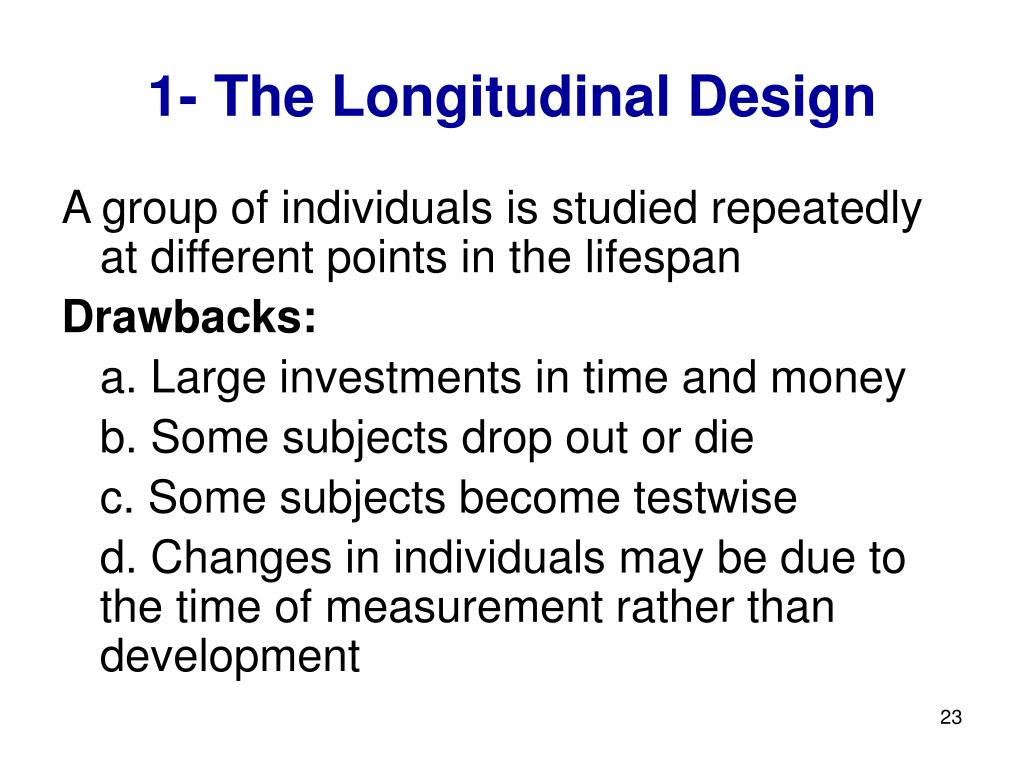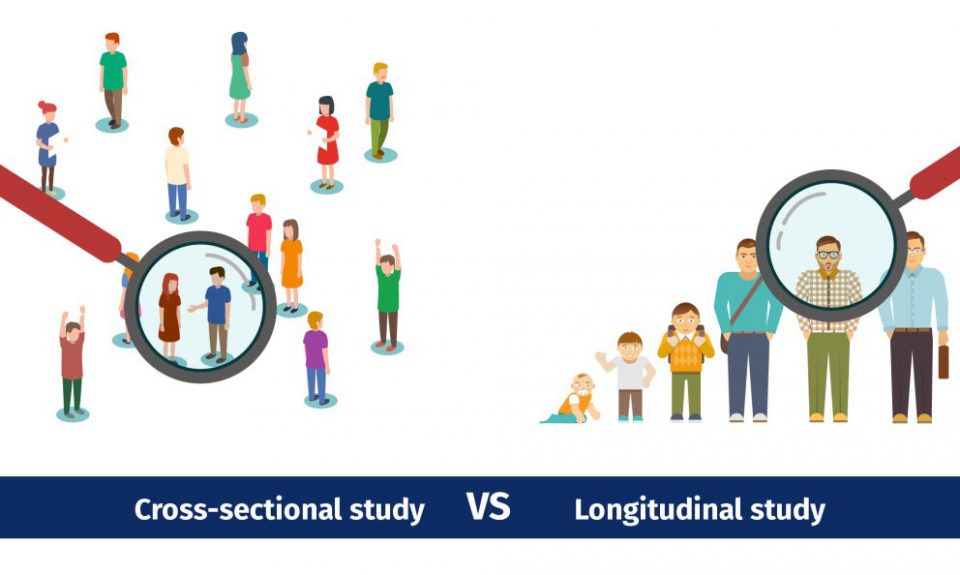Longitudinal Study Definition, Approaches & Examples
Table Of Content

During this time, the researcher can compare video game-playing behaviors with violent tendencies. Thus, investigating whether there is a link between violence and video games. Over many years, researchers can see both sets of twins as they experience life without intervention.
What is a Longitudinal Study? Definition, Types & Examples
Retrospective studies are generally less expensive and take less time than prospective studies, but they are more prone to measurement error. For example, familiarity with test items and procedures may allow participants to improve their scores over repeated testing above and beyond any true change. Cohort effects can also interfere with estimating other effects like retest effects. This happens because comparing groups to estimate retest effects relies on cohort equivalence. It is important to minimize attrition by tracking participants, keeping contact info up to date, engaging them, and providing incentives over time. This tendency is known as selective attrition and can threaten the validity of an experiment.
Longitudinal Study Definition, Approaches & Examples
Such a study needed to be a longitudinal survey since you can only understand the effects of aging en masse by considering the results over time. The results from this study are being used in areas like cardiovascular research and preventable hospitalizations. In cohort studies, researchers merely observe participants without intervention, unlike clinical trials in which participants undergo tests. Firstly it was a study carried out in a single population in a single town, bringing into question the generalisability and applicability of this data to different groups. However, Framingham was sufficiently diverse both in ethnicity and socio-economic status to mitigate this bias to a degree.
Participants tend to drop out
One of the longest longitudinal studies, the Harvard Study of Adult Development, has been collecting data on the physical and mental health of a group of men in Boston, in the US, for over 80 years. Longitudinal studies are a type of correlational research in which researchers observe and collect data on a number of variables without trying to influence those variables. Both studies are valuable for psychologists to observe a given group of subjects. Still, cross-sectional studies are more beneficial for establishing associations between variables, while longitudinal studies are necessary for examining a sequence of events. There are many other techniques like latent transition analysis, event history analysis, and time series models that have specialized uses for particular research questions with longitudinal data. The choice of model depends on the hypotheses, timescale of measurements, age range covered, and other factors.
Because the participants share the same genes, it is assumed that any differences are due to environmental analysis, but only an attentive study can conclude those assumptions. The design of the study is highly dependent on the nature of the research questions. Whenever a researcher decides to collect data by surveying their participants, what matters most are the questions that are asked in the survey.
Examples
Time invested in this initial period will improve the accuracy of data eventually received, and contribute to the validity of the results. Regular monitoring of outcome measures, and focused review of any areas of concern is essential (3). These studies are dynamic, and necessitate regular updating of procedures and retraining of contributors, as dictated by events. No set amount of time is required for a longitudinal study, so long as the participants are repeatedly observed.
Survey Themes

Let’s assume, for example, that you conduct an employee engagement survey every year. If your organization has done these surveys for the past 10 years, you now have more than enough material to conduct a retrospective study. You can then find out how employee engagement at your company has varied over time. A retrospective longitudinal study is when you take pre-existing data from previous online surveys and other research. The objective here is to put your results in a larger timeline and observe the variation in results over time.
The Study of Mathematically Precocious Youths
Unlike longitudinal studies, where the research variables can change during a study, a cross-sectional study observes a single instance with all variables remaining the same throughout the study. A longitudinal study may follow up on a cross-sectional study to investigate the relationship between the variables more thoroughly. Numerous variables are to be considered, and adequately controlled, when embarking on such a project. Additionally, the engagement and commitment of organisations contributing to the project is essential; and should be maintained and facilitated by means of regular training, communication and inclusion as possible. Conducting longitudinal research is demanding in that it requires an appropriate infrastructure that is sufficiently robust to withstand the test of time, for the actual duration of the study.

A longitudinal study over 40 years to study the metabolic syndrome as a risk factor for cardiovascular diseases ... - Nature.com
A longitudinal study over 40 years to study the metabolic syndrome as a risk factor for cardiovascular diseases ....
Posted: Wed, 03 Feb 2021 08:00:00 GMT [source]
Like Sonia, her preferences for eggs changed since she watched the documentary. Consider a study conducted to understand the similarities or differences between identical twins who are brought up together versus identical twins who were not. The study observes several variables, but the constant is that all the participants have identical twins.
That is really what drives us at Surveysparrow, that you might find something in the results you didn’t expect, and it might change the course of your company for the better. In this article, we’ll discuss the effects of selection bias, how it works, its common effects and the best ways to minimize it. A researcher wants to know if there’s any relationship between children who drink milk before school and high classroom performance. First, he uses a sampling technique to gather a large research population.
Without the cross-sectional study first, you would not have known to focus on men in particular. Both groups would then be observed over time to see if there are differences in outcomes, which could suggest an effect of the treatment or intervention. Case-control studies compare groups retrospectively and cannot be used to calculate relative risk. Longitudinal studies, though, can compare groups either retrospectively or prospectively. Detecting cohort effects is important but can be challenging as they are confounded with age and time of measurement effects. Techniques like maximum likelihood estimation and multiple imputation are better alternatives to older methods like listwise deletion.
They can also be particularly useful for ascertaining consumer trends if you’re trying to research consumers with a specific common characteristic. An example of such a study would be observing the choice of cereal for kids who go to Sunshine Elementary School over time. As for a formal definition, a longitudinal study is a research method that involves repeated observations of the same variable (e.g. a set of people) over some time. The observations over a period of time might be undertaken in the form of an online survey. It can be tremendously useful in a variety of fields to be able to observe behavior or trends over time.
Advanced longitudinal methods such as cross-lagged panel modeling and growth curve modeling are reviewed. Finally, the advantages and disadvantages of conducting longitudinal research are outlined. Once researchers have determined the study's scope, participants, and procedures, most longitudinal studies begin with baseline data collection.

Comments
Post a Comment